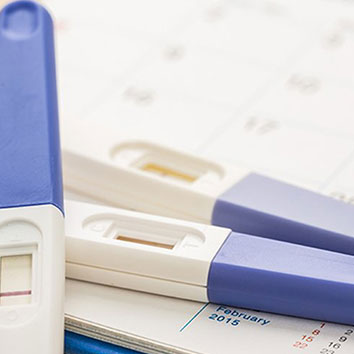If you’re trying to conceive, knowing your own ovulation cycle helps in finding the critically important fertile days. For many women, using a fertility monitor can make the process a lot more straightforward.
The best time to have intercourse is 12–48 hours before ovulation occurs. This way, the sperm have time to travel to the fallopian tubes to meet the egg when it is released from the ovary.
Unlike techniques such as monitoring post-ovulation rise in body temperature, using a fertility monitor can more reliably identify the critical 2 days in the lead-up to ovulation, maximising your chance of getting pregnant.
These FAQs will help you understand fertility monitors.
What is a fertility monitor?
- A fertility monitor is an electronic device that helps you to identify your fertile period. They are generally small, portable, battery-operated gadgets that analyse the results of a fertility test.
- Although there are multiple brands and types of fertility monitors in the market, the simple ones show either a red or green light when analysing a test-stick used to measure hormones in urine.
- Other more complex fertility monitors record a series of measurements over time (either of urine test-sticks, temperature, or saliva) and then highlight your most likely fertile period.
- The most common method used by fertility monitors is disposable test-sticks that are dipped into urine to measure hormone levels, usually LH (luteinizing hormone).
- Many fertility monitors use thermometers to identify the rise in body temperature that occurs a few hours after ovulation.
- Some fertility monitors measure hormone levels in saliva. This can be done by measuring ferning patterns (patterns of crystals formed in dried saliva), or even electrical resistance of saliva.
How does a fertility monitor work?
- After ovulation, the egg is viable for 12 to 36 hours. Fertility experts recommend having sex in the 2 days or so before ovulation or right at the time of ovulation, for the best chance at getting pregnant.
- Ovulation is triggered by a rise in the level of a number of hormones, including estrogen and luteinizing hormone (LH). This rise happens a few days before the egg is released and can be measured by changes in some bodily fluids.
- Some fertility monitors measure the levels of one or both of these hormones in your body (by testing a few drops of your saliva or a few drops of urine) so that you can see when this hormone surge occurs.
Can a fertility monitor be used for birth control?
This is not advisable. While some fertility monitors do advertise an accuracy of up to 99 percent, it is very unwise to use them for birth control because sperm can survive in the body for up to 5 days. This is generally much longer than the period of fertility identified by a fertility monitor.












